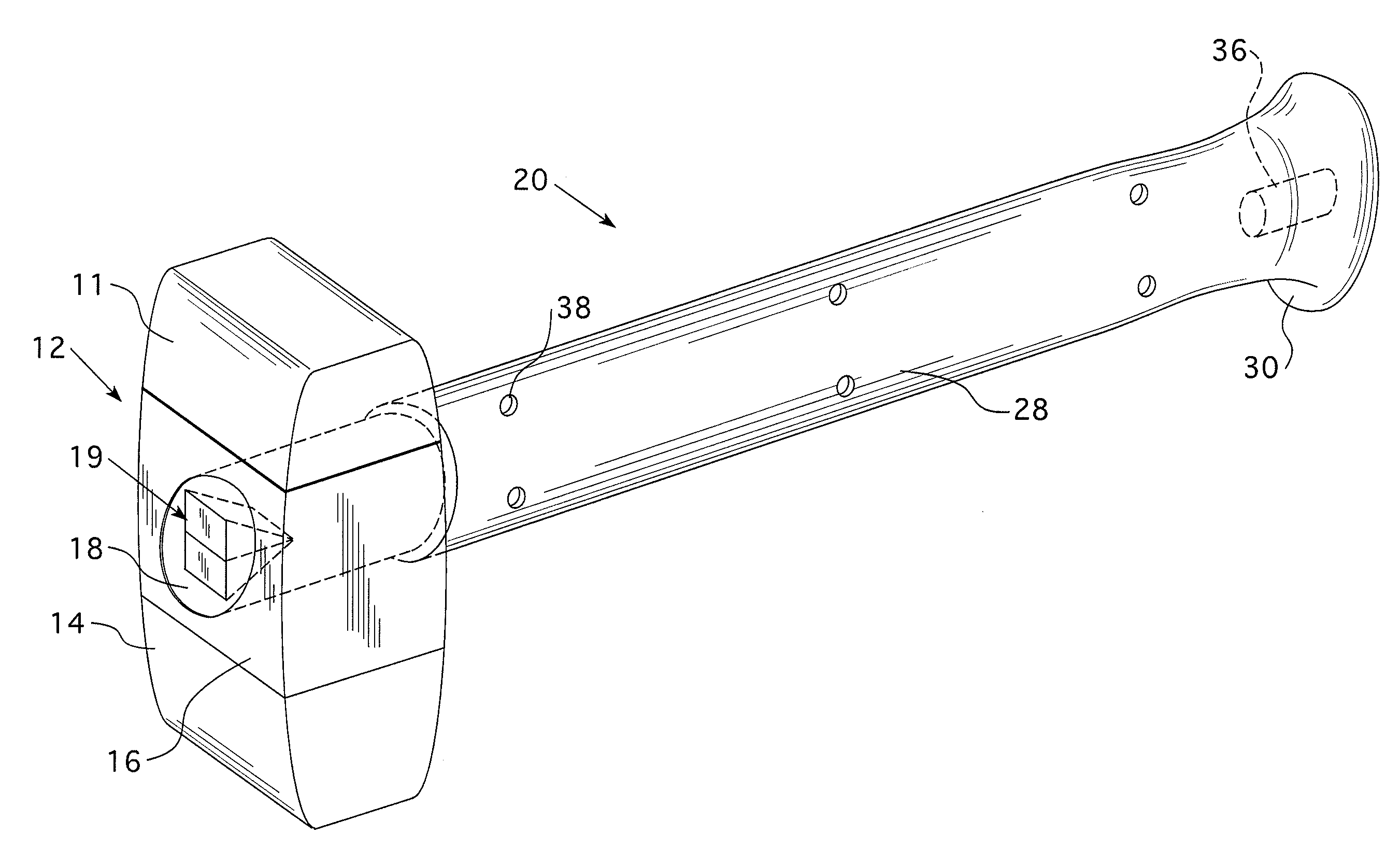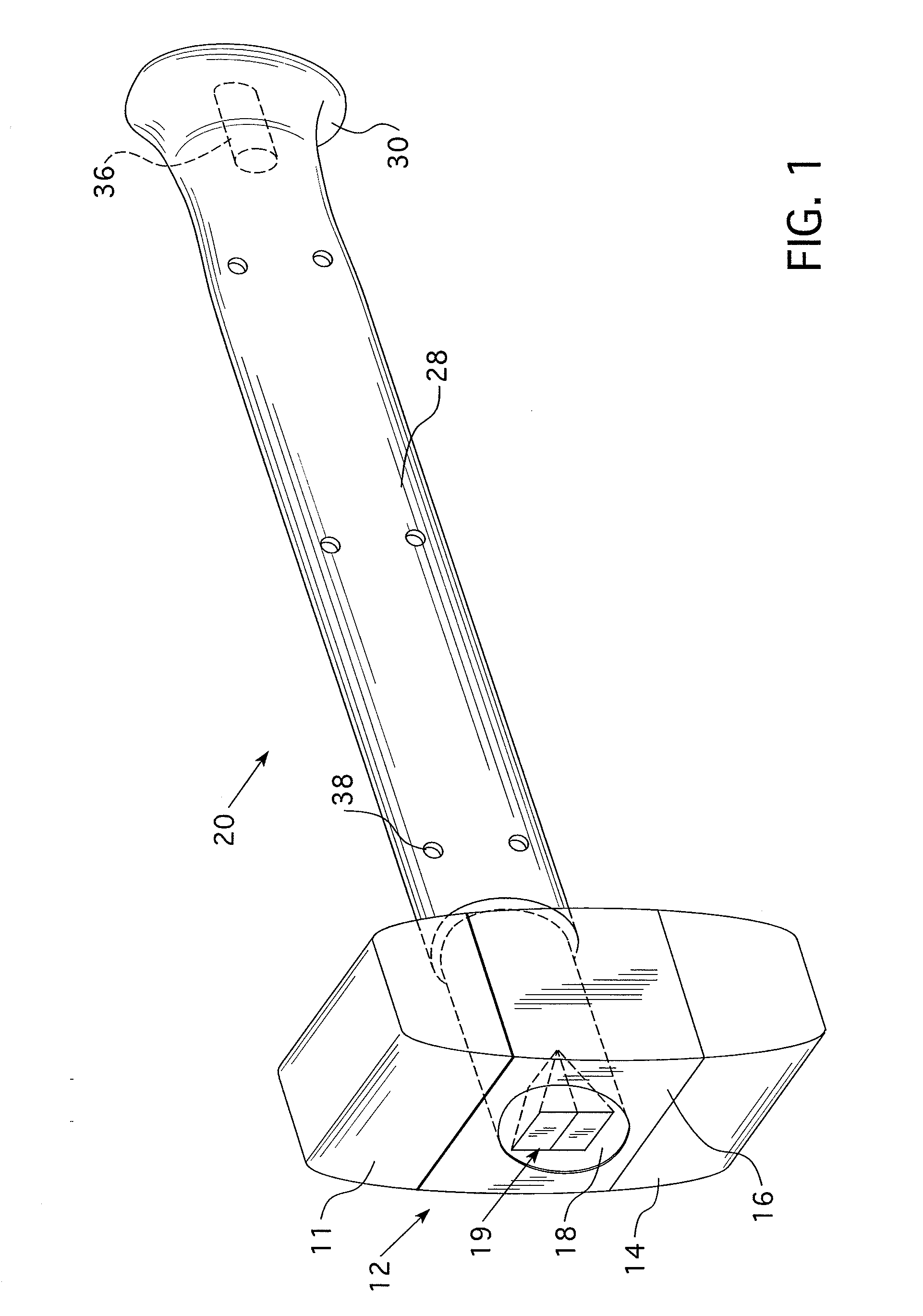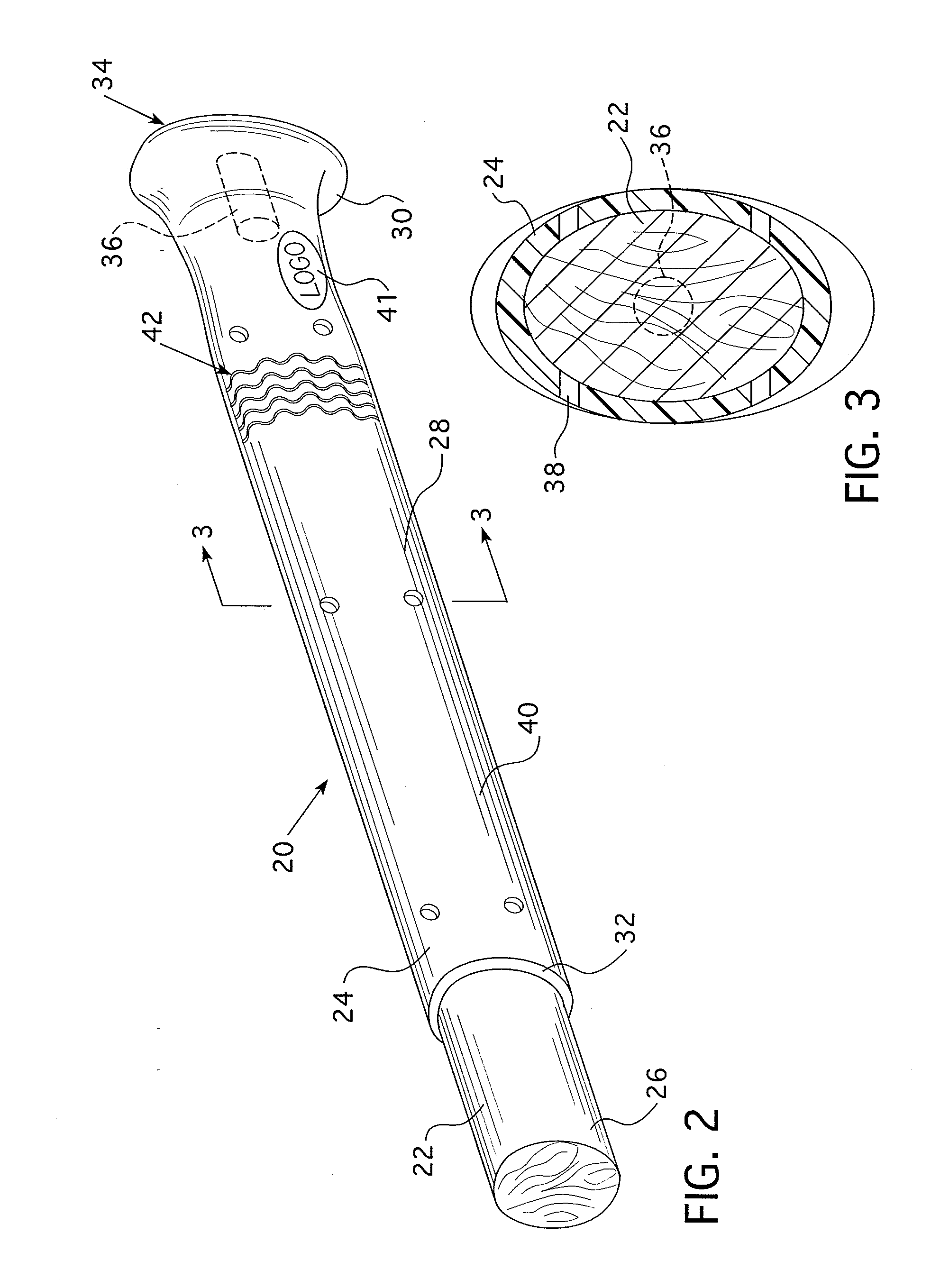Wood handle with overmold and method of manufacture
- Summary
- Abstract
- Description
- Claims
- Application Information
AI Technical Summary
Benefits of technology
Problems solved by technology
Method used
Image
Examples
Embodiment Construction
[0015]As used herein, an “overmold” is a layer of material applied to a substrate by injection molding.
[0016]As used herein, “generally uniform” and / or “generally smooth” when used in reference to the overmold outer surface means that the outer surface does not include any significant deformations in the overmold outer surface. Examples of insignificant deformations include, but are not limited to, a pattern of uniform ridges and valleys structured to act as a gripping surface, a decoration, logo, or trademark formed in a discrete location, or a window formed in a discrete location and structured to show the substrate. Such insignificant deformations are intentional and are typically incorporated into the mold. Alternatively, such intentional and / or insignificant deformations may be carved or cut into the overmold after application to the wood member.
[0017]As used herein, “substantially smooth” when used in reference to the overmold outer surface means that the outer surface does no...
PUM
| Property | Measurement | Unit |
|---|---|---|
| Length | aaaaa | aaaaa |
| Length | aaaaa | aaaaa |
| Fraction | aaaaa | aaaaa |
Abstract
Description
Claims
Application Information
 Login to View More
Login to View More - R&D
- Intellectual Property
- Life Sciences
- Materials
- Tech Scout
- Unparalleled Data Quality
- Higher Quality Content
- 60% Fewer Hallucinations
Browse by: Latest US Patents, China's latest patents, Technical Efficacy Thesaurus, Application Domain, Technology Topic, Popular Technical Reports.
© 2025 PatSnap. All rights reserved.Legal|Privacy policy|Modern Slavery Act Transparency Statement|Sitemap|About US| Contact US: help@patsnap.com



